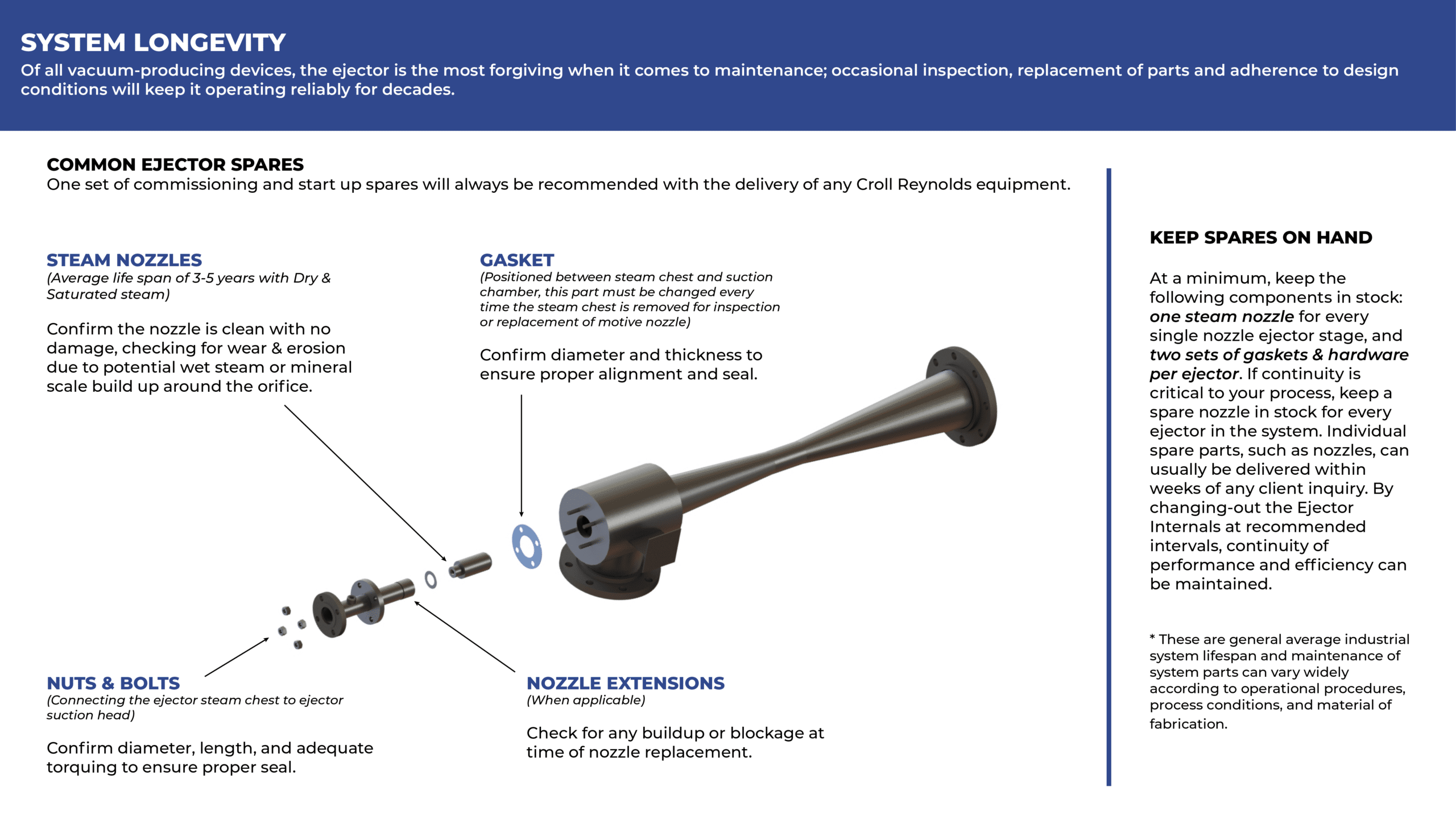Power Plants
Power Plants
As a leading provider of vacuum processing and ejector systems, Croll-Reynolds Co., Inc. has established itself as the engineering partners-of-choice within the Utilities sector. One market we serve is the Power generation industry, where our state-of-the-art ejectors are utilized to improve turbine efficiency and increase the megawatt output of power plants.
Our precision-engineered steam ejector vacuum system and other ejector solutions deliver significant operational improvements to traditional thermal, hybrid, and geothermal power plants. These enhancements guarantee superior steam turbine efficiency, resulting in optimal performance under variable design conditions which might otherwise disrupt a Power Plant system’s routine operation.
The Significance of Ejector Systems in Power Plants
Ejector systems play a critical role in enhancing the operational reliability and efficiency of power plants. By employing the appropriate ejector vacuum system, air and non-condensable gases can be extracted from the power plant’s main (air-cooled or water-cooled) turbine condenser. The removal of these gases creates a vacuum, enabling a greater pressure-drop across the turbine to maximize the rotational output of its vanes.
Ejectors, by design, have an extraordinary capacity to manipulate fluid flow and can generate high velocities in the sonic or supersonic range. These characteristics make steam ejectors ideal for regulating pressure in upstream vessels.
A well-designed Power plant ejector system creates the desired vacuum level in the main condenser, where the steam exhaust from the turbine is condensed. Ejectors make the best use of input conditions by facilitating the movement and entrainment of liquids or vapors from low-pressure areas and discharging them at higher overall pressures. This process significantly enhances turbine efficiency, ensuring uninterrupted operation and the greatest possible power output year-over-year.
Benefits of Ejector Packages in Power Plants
Utilizing ejectors in power plants offers several advantages including but not limited to:
No moving parts: Ejectors boast high reliability due to their lack of moving parts. Upkeep procedures are simple and straightforward given the “one-piece” construction of built ejectors.
Low maintenance cost: Ejectors have low maintenance requirements and exhibit longevity and reduced wear when compared to other systems.
Economical: Ejectors deliver efficiency and effectiveness, making them a cost-effective choice. Their compatibility with other equipment leads to cost savings compared to alternative pump options.
How Steam Turbines Enhance the Operation of Power Plants
Steam turbines and condensation systems must consistently function at an optimal state in order to maintain power plant efficiency. A reliable ejector system, such as a steam jet ejector vacuum system, ensures uninterrupted performance; allowing maintenance and part replacement during the operation without shutdowns.
Steam Ejectors in Steam Turbines
A steam jet ejector consists of 3 main parts: a nozzle, suction chamber, and diffuser. Steam that enters the ejector is funneled through a nozzle that expels steam at high-velocity through the suction chamber and into the diffuser. This high-velocity stream creates displacement and a lower pressure within the suction chamber, creating vacuum. Any air or gas introduced into the ejector suction chamber inlet is entrained by the high-velocity steam. This resulting combined stream is then discharged through the diffuser.
The velocity energy is then converted back into pressure in the diffuser, compressing the mixture to a higher pressure. A steam ejectors size, dimensions, and internal geometry will depend on the required suction flow rate and desired vacuum.
Two Types of Steam Ejectors Employed in Power Plants:
Single-stage steam ejectors with silencer: Also known as a hogging ejector. This system is excellent for evacuating large volumes of non-condensable gases during system startup and maintaining a moderate level of vacuum in preparation for a switch to holding ejectors.
Two-stage, twin element, condensing steam jet ejectors: Also known as a holding ejector system. This system is ideal for a wide range of motive steam pressures and consists of sequential stages of ejectors and heat exchangers. The holding system is designed to capture clean condensate from the motive steam source and utilizes condensate from the main turbine condenser as a cooling fluid source for heat exchangers. This allows the holding steam jet system to recapture energy, minimize utility costs, and deliver desired vacuum.
Choose Croll-Reynolds Co. for Enhanced Turbine Efficiency
It is crucial to incorporate top-of-the-line vacuum processing systems in power plants in order to avoid plant downtime and maintain peak operational efficiency. Contact us today to learn more about our solutions. Request a quote, and we will provide a competitive proposal to meet your requirements.
Case Studies
Featured Products
removal of non-condensable gas for turbine efficiency
For your vacuum system requirements, contact our US headquarters in Parsippany or our representative offices in your area.
